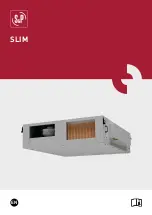
B-11
B-11
OPERATION
POWER MIG 300
PULSE-ON-PULSE
™
(GMAW-PP)
Pulse on Pulse
™
is a Lincoln process specifically
designed for use in welding relatively thin (less than
1/4" thick) aluminum (See Table B.3). It gives weld
beads with very consistent uniform ripple.
In Pulse on Pulse modes, two distinct pulse types are
used, instead of the single pulse type normally used in
GMAW-P. A number of high energy pulses are used
to obtain spray transfer and transfer metal across the
arc. Such pulses are shown in Figure B.6. After a
number "N" of such pulses, depending on the wire
feed speed used, an identical number "N" of low ener-
gy pulses are performed. These low energy pulses,
shown in Figure B.6, do not transfer any filler metal
across the arc and help to cool the arc and keep the
heat input low.
The Peak Current, Background Current, and
Frequency are identical for the high energy and low
energy pulses. In addition to cooling the weld down,
the major effect of the low energy pulses is that they
form a weld ripple. Since they occur at very regular
time intervals, the weld bead obtained is very uniform
with a very consistent ripple pattern. In fact, the bead
has its best appearance if no oscillation of the welding
gun ("whipping") is used.(See Figure B.7)
When Arc Control is used in the Pulse on Pulse
modes, it does the same things it does in the other
pulsed modes: decreasing the Arc Control decreases
the droplet transfer and weld deposition rate.
Increasing the Arc Control increases the droplet trans-
fer and weld deposition rate. Since Arc Control varies
weld droplet transfer rate, the Arc Control can be used
to vary the ripple spacing in the weld bead.
BENEFITS OF PULSE ON PULSE FROM
LINCOLN ELECTRIC
•
Excellent appearance of the weld bead
•
Improved cleaning action
•
Reduced porosity
Table B.3 shows WFS and Trim settings for common
aluminum types and wire sizes when welding with
Pulse-on-Pulse. The welds made to obtain the values
in the table were fillet welds in the flat position. The
values in the table can be helpful as a starting point to
establish a welding procedure. From there, adjust-
ments need to be made to set the proper procedure
for each specific application (out-of-position, other
types of joints, etc.).
The comments on Table B.3 show values of WFS
below which it is not recommended to weld. The rea-
son is, that below these values the weld transfer will
change from a spray arc to a short-arc, which is not
advisable when welding aluminum.
PEAK
AMPS
BACKGROUND
AMPS
TIME
HIGH HEAT
PULSES
LOW HEAT
PULSES
"N" PULSES
"N" PULSES
FIGURE B.6
FIGURE B.7
Aluminum 4043
Aluminum 4043
Aluminum 5356
Aluminum 5356
100% Ar.
100% Ar.
100% Ar.
100% Ar.
E4043
E4043
E5356
E5356
0.035
3/64
0.035
3/64
98
99
101
102
14 ga.
250 / 1.0
200 / 1.0
230 / 1.0
225 / 1.0
10 ga.
400 /1.0
280 / 1.0
425 / 1.0
400 / 1.0
3/16
550 / 1.0
340 / 1.0
670 / 1.0
500 / 1.0
1/4
600 / 1.0
400 / 1.0
700 / 1.0
550 / 0.9
WFS / TRIM
MATERIAL THICKNESS
MATERIAL
GAS
WIRE
WIRE SIZE
WELD MODE
Not Recommended
below 200 WFS
COMMENTS
Not Recommended
below 200 WFS
Not Recommended
below 100 WFS
Not Recommended
below 200 WFS
WELDING PROCEDURES FOR PULSE-ON-PULSE (TABLE B.3)
Содержание POWER MIG 300
Страница 43: ...DIMENSION PRINT F 5 POWER MIG 300 F 5 3 00F M19231 ...
Страница 44: ...NOTES POWER MIG 300 ...
Страница 45: ...NOTES POWER MIG 300 ...
















































